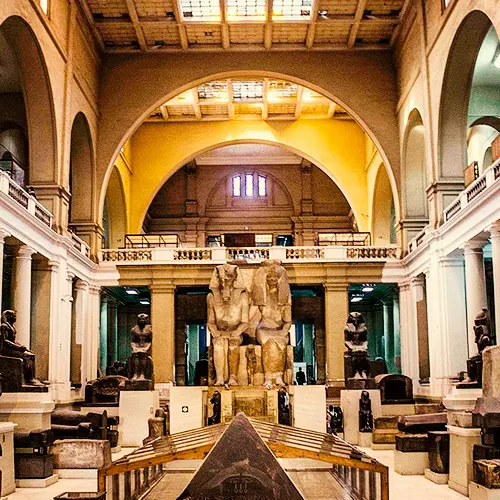
Hatshepsut, the most famous queen, became a Pharaoh and founded this temple on the west back in Luxor city, directly across the Nile River from Karnak Temple.
This temple is called Djeser-djeseru, meaning the Holy of Holies. Senenmut inspired the design of this temple from the structure of the temple of temple Mentuhotep II (Neb-Hept-Re) from the 11th dynasty, Middle Kingdom. This temple is dedicated to being the mortuary temple of Queen Hatshepsut.
This temple consists of three levels attached with ramps. On the uppermost level, an open courtyard lies just beyond the portico. There are statues of Hatshepsut in Osiris shape lean against the pillars of these porticos.
Also, the temple contains shrines for the god Anubis, the god of the dead, and the goddess Hathor, the goddess of women, fertility, and love.
- In the northern part, there is a scene depicting Queen Hatshepsut while she hunted in the bush in front of several gods like Horus, Thoth, and Amun.
- While on the southern part, there is a scene depicting the transportation of obelisks from the quarry to their destination in Karnak Temple.
- In the northern part, there is a scene depicting the divine birth of Queen Hatshepsut, as she showed that his father is the god Amun himself to prove that she is the rightful king of Egypt.
- While on the southern part, there is a scene depicting the expedition of Queen Hatshepsut to Punt.
The rest of the temple was carved inside the mountain.
Finally, this temple is also called Deir el-Bahari Temple, due to there was a Christian monastery built there in the 7th century. Deir is an Arabic word meaning monastery.









